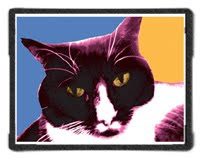Don't take dining advice from strangers
I got email from OpenTable, asking if I'd take part in a user experience survey. Happy to help (and curious to see what they're plotting), I worked through a bunch of questions about booking a table through the site.
Toward the end of the survey was a list of future enhancements. What would you like to see on the site, they asked. One choice was "customer reviews."
No, I said. No, no, a dozen times no.
I know, that's what it's all about today: the interactivity. The social media. The Interwebs 2.0. Of course they have to consider it. And a site dedicated to helping people decide where to eat--well, that's a natural place to build community. What's more user-friendly than allowing people to share opinions about dining options?
Um, how about asking people to keep their opinions to themselves?
Don't get me wrong: I love finding out about new places. Tell me you celebrated a birthday, or spent a day on the North Shore, or took a trip to Chicago, and I'll ask, "Where did you eat?"
But I don't look for dining advice from people who post user comments.
Allow me to illustrate. This is a selection of remarks about an Italian chain:
"We've enjoyed their food for years [...] it is delicious food and lots of it at great prices with fast and friendly service. "
"Service is slow, food served luke warm, overpriced ..."
"... huge portions of pretty good italian food. I've eaten there several times and the food is always fresh and tasty ..."
"What a huge pile of garbage. True, they give you enough food to feed an army, but who wants to eat any of that overcooked, preheated slop??"
See what I mean? One man's taste sensation is another man's pig swill. The only consistent observation here is that portions are gargantuan. Service, ingredients and pricing are all in flux.
Okay, fine. Maybe it's not fair to expect a unanimous chorus of praise for a pile-'em-high family-dining chain like Vinny T's. But what about a small, independent bistro?
"The wait staff was attentive but not hovering. The food and its presentation were both sublime."
"Food was average and their attempt to make something extraordinary and fun [...] was very disapointing. The flavours were not at all complementing each other, if there were any flavours or taste what so ever."
"I felt we should have left the restaurant feeling satistfied. The only reason I wouldn't give this restaurant a 5 is the portions sizes, the food was excellent."
Food good! Food bad! Food good but insufficient!
At least the above restaurants have enough reviews to create a fairly meaningful average; the more comments there are, the easier it is to see which way the scale is tipping.
But what happens when there are only two posts--and a 50-50 split? For instance, if you were checking out a new place, how would these two opinions help you decide?
"Quite simply a hidden gem in Jamaica Plain. I have dined here 3 times and the meals and service have been outstanding. "
"This place is terrible. The portions are small and overpriced. The room is tiny, overcrowded and noisy. The waiter was slow and sweated on my food and on my wife."
As these last two illustrate, one reason to stay away from user comments is that they tend to illustrate extreme points of view. Whether the experience was magical or appalling, it motivated these diners to sit down and write a report.
Add to that the concept of participation inequality--that, as my man Jakob Nielsen explains, only 1% of online community members post frequently, whereas 90% are lurkers who never post at all--and you get a see-through sliver of a sample size.
When the people speak, don't listen to them.
That's the detailed version of my response to the question. On the survey, however, the only note of my dissent was a checked radio button.
But tell me: am I over-reacting? Is a little community input a bad thing?
(Oh. See what I'm doing here? I'm asking for user comments! Talk about hypocrisy!)
Labels: dining, OpenTable, pigalle, restaurants



0 Comments:
Post a Comment
Subscribe to Post Comments [Atom]
<< Home